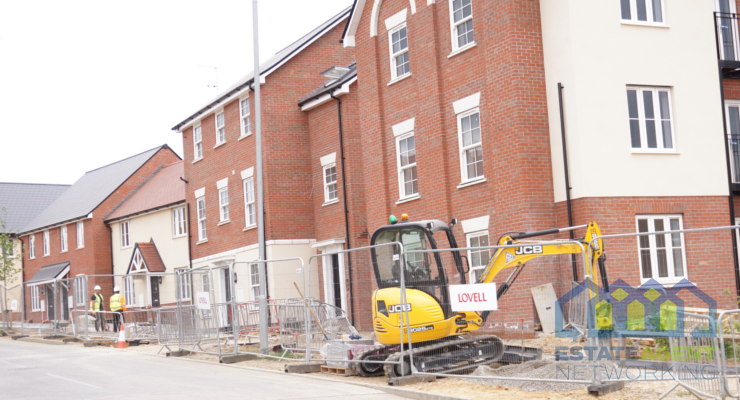Early Christmas gift for buyers as sellers lower their price expectations
- The price of property coming to market falls by 1.7% (-£5,222) this month, and whilst it is the norm for new seller asking prices to fall at this time of year, this is the largest November drop since 2012
- New sellers pricing more realistically in effort to minimise pre-Christmas ‘buyer humbug’ syndrome fuelled by stretched affordability and Brexit uncertainty
- All regions see a monthly price fall, with largest falls in the south and the upper price sector:
- Higher end London commuter towns – where prices have risen by over 40% since 2011 – unsurprisingly have significant price falls
- Annual national rate is marginally negative (-0.2%, -£607) for the first time in seven years
- Price slowdown seen as an early Christmas present for some buyers with numbers of sales agreed up nationally by 1% compared to same period a year ago, indicating some sound underlying fundamentals
The price of property coming to market falls by an average of 1.7% (-£5,222) this month. It is the norm for new seller asking prices to fall at this time of year to attract buyers who are increasingly distracted by the run-up to Christmas. However, this is the largest drop in the month of November since 2012. The backdrop of cooling markets in the south and in the upper price sectors, combined with the political uncertainty, has resulted in new sellers lowering their asking price aspirations earlier than usual. Encouragingly, slightly more sales have been agreed than in the same period a year ago.
Miles Shipside, Rightmove director and housing market analyst comments: “New sellers and their agents are reacting to market forces and lowering their pricing aspirations by more and sooner than usual. Stretched buyer affordability and the cooling markets in the south and in upper price brackets have combined with the ongoing political uncertainty to change pricing optimism into pricing realism. This is a welcome effort by sellers to minimise the usual pre-Christmas market slowdown. Some new-to-the-market sellers and their agents have acted early to try to improve the buying mood and avoid the traditional “buyer humbug” dislike of Christmas housing activity.”
All regions see a monthly fall in the price of property coming to market, with most of the largest falls in the south. The largest monthly faller is the South East with an average 2.1% fall (-£8,647). Some of the more expensive towns in the London commuter belt which had seen over 40% price rises since 2011 unsurprisingly have significant price falls. London new seller asking prices drop too by 1.7% (-£10,793), though this is not unexpected since the capital generally sees greater seasonal price volatility than the rest of the country.
Shipside observes: “Seven years ago price rises started rippling out from the capital into the commuter belt in the South East. That ripple effect has now been reversed, with some of the London market price re-adjustment reverberating out into the commuter belt. New sellers of property now coming to market in this region have belatedly lowered their price sights. Higher end former hot-spot towns are now among the biggest annual fallers with Rickmansworth (-7.1%), Esher (-6.4%) and Gerrards Cross (-6.0%) now cold spots following price rises of nearly 40% over the seven preceding years.”
These factors have contributed to the first national year-on-year price fall since November 2011, with the price of newly-marketed property now 0.2% (-£607) cheaper than 12 months ago. With the supply of new-build houses remaining tight, a low interest rate environment combined with near record employment, and average wage increases now rising faster than both CPI inflation and average property prices, the underlying fundamentals for a stable property market remain sound. Indeed the number of sales agreed by estate agents was up in October 2018 compared to October 2017, albeit by a modest 1%.
Shipside notes: “While many thought that the down-to-the-wire Brexit deal uncertainty would hold people back from buying, more buyers have actually jumped in. Some buyers see this pre-Christmas price lull as a gift to their negotiations. It proves that people need to get on with their lives and will continue to buy homes if the underlying economic fundamentals remain strong.”
Agent’s view
Richard Freshwater, Director of Cheffins Estate Agents in Cambridge, said: “There has been an increase in the number of price reductions this year, but this is partly due to the UK being in the final throes of Brexit negotiations and the uncertainty which this has brought to the market. This has been compacted in the later months of the year in the run up to Christmas as part of the usual annual slow down during the winter months. Motivated sellers need to ensure that their properties have been priced realistically from the outset as increases in stock continue to allow buyers to drive market fluctuations. Those which have been realistically priced and correctly marketed from the off are still seeing large viewing numbers, offers and in some situations, sealed bids. The key with price reductions is to drop the price by enough to bring in a new set of buyers within a new bracket. The mistake often made by sellers is to reduce the price on consecutive occasions which can have a damaging effect and put buyers off. It is much more sensible to significantly reduce to a rounded figure and then bring in higher levels of interest, hopefully to generate competition between buyers.”









